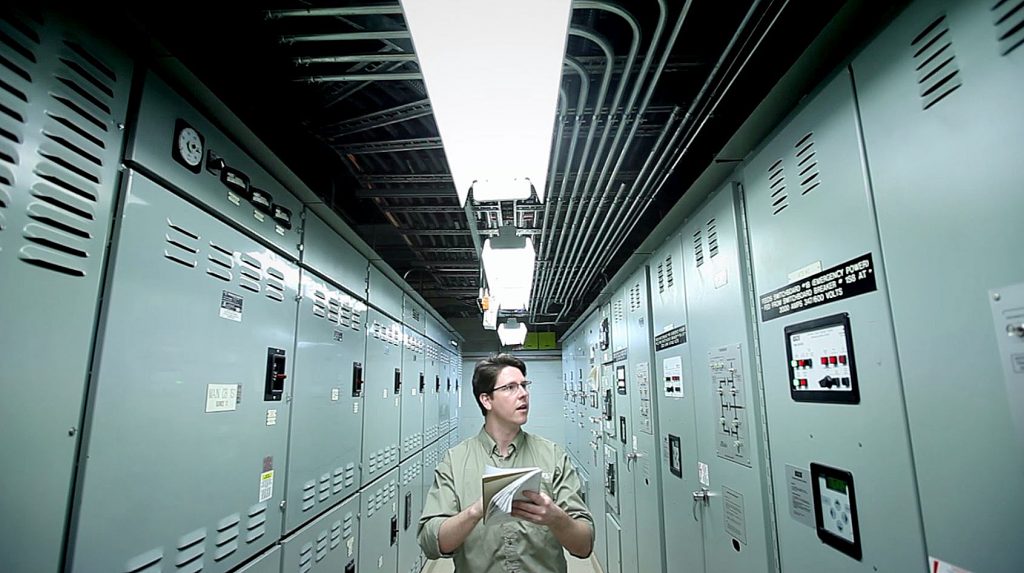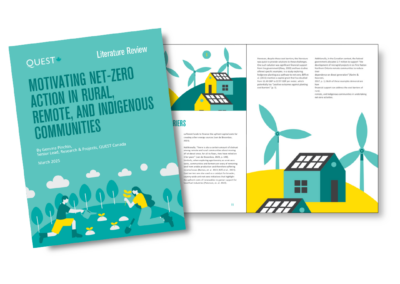Where Wind Blows, Water Flows, Sun Shines and Lithium Sings

There’s a certain nobility in making do with less, carving away the wasted watts permeating modern business while keeping the lights on and the doors open. For some, this means LEDs and heat pumps. For others, it means hiring a professional.
Errol Pereira of Efficiency Nova Scotia has overseen the Onsite Energy Manager service since 2016, an initiative which embeds one of his efficiency colleagues into a partnering business full time, and puts them to work identifying opportunities to save electricity and money.
“The service has taken on a life of its own,” said Pereira.
From humble beginnings in 2012 with only two energy managers in the field, the service now has 12, most contracted to a single client. Their salaries are covered jointly by Efficiency Nova Scotia and the partnering business in question, with the understanding that each energy manager will save more money than they themselves cost.
Pereira said that, when one of his energy managers arrives at a partnering business, there tends to be some “low hanging fruit,” like the aforementioned LED lights and heat pumps. They might also start with general air sealing and improved insulation, in the walls, along air vents and around water lines. The bulk of energy savings, however, come from building optimization – the more intelligent and targeted use of pre-existing heating, cooling, ventilating and lighting systems.
Dalhousie University, for example, is one of the service’s oldest partnering businesses, keeping an energy manager on staff since 2013. The first of these managers realized that throughout much of the university, heating, cooling and ventilation systems were running around the clock, maintaining comfortable temperatures in spacious classrooms even when no one was there. By scaling back these systems on evenings, weekends and holidays, when much of campus is vacant, he saved the university approximately $250,000 a year.
Another long standing client of the Onsite Energy Manager service is the Halifax Regional Municipality, who, in 2019, had embedded energy manager David Brushett evaluate the electrical use of their Gordon R. Snow Community Centre in Fall River, Nova Scotia. It was a new building designed with efficiency in mind, but was performing poorly. Brushett discovered that much of the centre’s heating, cooling and ventilating infrastructure, which was supposed to be automated for maximum efficiency, had in fact been set to manual, waiting for instructions which never came. Some units, for example, had been switching on at 1am for no reason at all. Correcting this and other inefficiencies saved the centre over $13,000 a year.
The Onsite Energy Manager service has targeted businesses which spend at least $1 million a year on electricity, said Pereira, the sorts of institutions which can benefit most, and which represent much of the electricity consumed in Nova Scotia. Building optimizations like those described above can be as complicated as hands-on mechanical engineering, or as simple as cleaning out air filters.
“There are some accounts with us today that have been in place since the beginning,” said Pereira. “We have a good track record of holding onto and producing value for those organizations once we get an [energy manager] on site.”
Aside from consistently auditing energy use and proposing efficiency upgrades, onsite energy managers also work to identify various incentive and funding programs for energy efficiency work available to the business in question. Many of these incentives are offered by Efficiency Nova Scotia, but energy managers also leverage provincial and federal dollars. This, said Pereira, is part of how they pay for themselves, and typically do better still.
“It would be fantastic if everyone understood the value of an onsite energy manager,” said Pereira. In his mind, the surest sign of the service’s success would be for Nova Scotian businesses to hire their own energy managers, independent of Efficiency Nova Scotia but inspired by their work.
By the end of 2019, the service’s work was saving a cumulative 155 gigawatt hours of electricity per year, which represents about 1.5 per cent of the electricity sold by Nova Scotia Power annually. Conservatively, their projects have prevented the release of 98,000 metric tonnes of carbon dioxide (equivalent to taking 21,000 cars off the road), and over the lifespan of existing upgrades, will prevent the release of over 350,000 metric tonnes.
If the program had one shortcoming, said Pereira, it would be its inaccessibility to smaller businesses and municipalities who have a harder time justifying the cost of an embedded energy manager. It’s Pereira’s ambition to overcome this obstacle by having a single energy manager shared by several small businesses or municipalities, improving the access of these entities to provincial and federal dollars, as well as the efficiency and optimization work enjoyed by larger clients. Just such an arrangement is being piloted with their most recently hired energy manager, who will be working with six smaller municipalities in tandem.
“I’m excited about expanding this service to smaller institutions,” said Pereira. “It’s going to help produce more sustainable outcomes in their areas, and across the province. There tends to be both an environmental and economic benefit to our work.”
ABOUT THE AUTHOR

Zack Metcalfe

About Powered by Communities
Established in 2017, Powered by Communities is an awareness-raising, communications and media platform that highlights and celebrates local community energy initiatives taking place across the country, from coast to coast to coast. The platform inspires, informs and engages its readership with stories and articles detailing community energy initiatives being led by local governments, municipalities, Indigenous communities, community groups, non-profits, charities, and enterprising individuals.

À propos de QUEST Canada
QUEST Canada est un organisme national à but non lucratif qui soutient les collectivités canadiennes dans leur cheminement vers la consommation nette zéro. Depuis 2007, nous facilitons les connexions, donnons du pouvoir aux champions communautaires et influençons les décideurs pour mettre en œuvre des systèmes énergétiques efficaces et intégrés qui répondent le mieux aux besoins des communautés et maximisent les opportunités locales. Nous développons des outils et des ressources, nous réunissons les parties prenantes et les détenteurs de droits et nous conseillons les décideurs - tout cela dans le but d'encourager et de permettre aux communautés de contribuer aux objectifs de consommation nette zéro du Canada. Pour en savoir plus sur QUEST Canada, visitez notre site Web : www.questcanada.org.

Support local communities by sharing this story
MORE FROM POWERED BY COMMUNITIES
S'inscrire
Rejoindre la conversation!
Inscrivez-vous pour recevoir les dernières nouvelles et mises à jour sur les événements de QUEST Canada et recevez la newsletter mensuelle de QUEST Canada.




